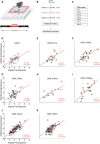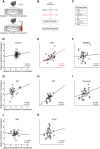Stability of olfactory behavior syndromes in the Drosophila larva
- PMID: 36765192
- PMCID: PMC9918538
- DOI: 10.1038/s41598-023-29523-x
Stability of olfactory behavior syndromes in the Drosophila larva
Abstract
Individuals of many animal populations exhibit idiosyncratic behaviors. One measure of idiosyncratic behavior is a behavior syndrome, defined as the stability of one or more behavior traits in an individual across different situations. While behavior syndromes have been described in various animal systems, their properties and the circuit mechanisms that generate them are poorly understood. We thus have an incomplete understanding of how circuit properties influence animal behavior. Here, we characterize olfactory behavior syndromes in the Drosophila larva. We show that larvae exhibit idiosyncrasies in their olfactory behavior over short time scales. They are influenced by the larva's satiety state and odor environment. Additionally, we identified a group of antennal lobe local neurons that influence the larva's idiosyncratic behavior. These findings reveal previously unsuspected influences on idiosyncratic behavior. They further affirm the idea that idiosyncrasies are not simply statistical phenomena but manifestations of neural mechanisms. In light of these findings, we discuss more broadly the importance of idiosyncrasies to animal survival and how they might be studied.
© 2023. The Author(s).
Conflict of interest statement
The authors declare no competing interests.
Figures




References
Publication types
MeSH terms
Substances
Grants and funding
LinkOut - more resources
Full Text Sources
Molecular Biology Databases

